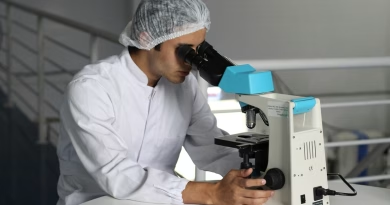CRISPR in 2025: What Gene Editing Has Already Achieved
When CRISPR burst onto the scene a decade ago, the promises were grand: curing genetic diseases, eliminating inherited disorders, and even crafting designer humans. As 2025 unfolds, CRISPR isn’t just a futuristic idea—it’s a working tool.
But how far has it really come? What’s hype and what’s healing?
Let’s break down what gene editing has already delivered—and what it still hasn’t.
✅ 1. Rare Disease Therapies Are Becoming Reality
CRISPR has successfully been used to treat monogenic diseases—those caused by a single faulty gene. Notably:
- Sickle Cell Disease and Beta Thalassemia: In late 2023, the UK approved a CRISPR-based therapy called Casgevy (developed by Vertex & CRISPR Therapeutics). In 2025, it’s now FDA-approved and available in the U.S., showing promising remission results in over 90% of patients.
- Leber Congenital Amaurosis: One of the first in vivo (inside the body) CRISPR therapies, aimed at restoring vision, has reached commercial trials.
These are not theoretical. Patients are already walking out of clinics with gene-edited cells inside them.
🌾 2. Agriculture Is Quietly Being Revolutionized
Forget corn that just grows faster. In 2025, CRISPR is helping create climate-resilient crops and precision livestock.
- Drought-tolerant rice varieties are being trialed in Southeast Asia.
- Disease-resistant pigs with edited genes to prevent African swine fever are already in early farming adoption.
- In the U.S., gene-edited lettuce varieties are gaining regulatory approval without being classified as GMOs under USDA guidelines.
The result? Better yields, fewer chemical inputs, and crops that survive harsher conditions.
👶 3. Human Germline Editing? Still Off Limits (For Now)
After the international outrage surrounding China’s CRISPR baby experiment in 2018, a firm global consensus remains in place: germline editing—changes that pass on to future generations—is off the table.
2025 brings new international bioethics charters that reaffirm this stance. While research continues in embryos (strictly non-viable and for study only), clinical applications remain banned in most countries.
The goal: walk before we run.
🧪 4. Emerging Applications in Cancer & HIV
CRISPR is now entering oncology trials targeting specific mutations in cancers like non-small cell lung cancer and leukemia.
Meanwhile, scientists are experimenting with CRISPR to snip latent HIV out of infected cells. While still early-stage, it marks a potential pathway toward functional HIV cures in the future.
These aren’t miracle cures yet—but the shift from mice to humans is very real.
⚖️ 5. Regulation and Access: Still a Bottleneck
Despite the breakthroughs, CRISPR therapies are expensive and complicated to administer. In 2025:
- A single CRISPR treatment can cost upwards of $2 million.
- Infrastructure like specialized labs, genetic testing, and post-editing monitoring is only available in select countries.
- Ethical reviews and regional laws still vary wildly—especially in gene-edited agriculture.
🔭 What’s on the Horizon?
- CRISPR 3.0 tools like base editing and prime editing promise even more precision, reducing off-target effects.
- Companies are working on “one-and-done” injections for simpler administration.
- Synthetic biology firms are designing programmable CRISPR systems for real-time cellular logic (like toggling genes on/off).
2026–2028 could see rapid adoption—if costs drop and regulations align.
🧠 Final Take: From Promise to Practice
CRISPR in 2025 is no longer speculative. It’s saving lives, feeding people, and shaping biotech.
But it’s also expensive, ethically charged, and still limited in scope. What’s clear is this: the gene editing genie is out of the bottle—and it’s learning to write in lowercase first, before rewriting full genomes.




